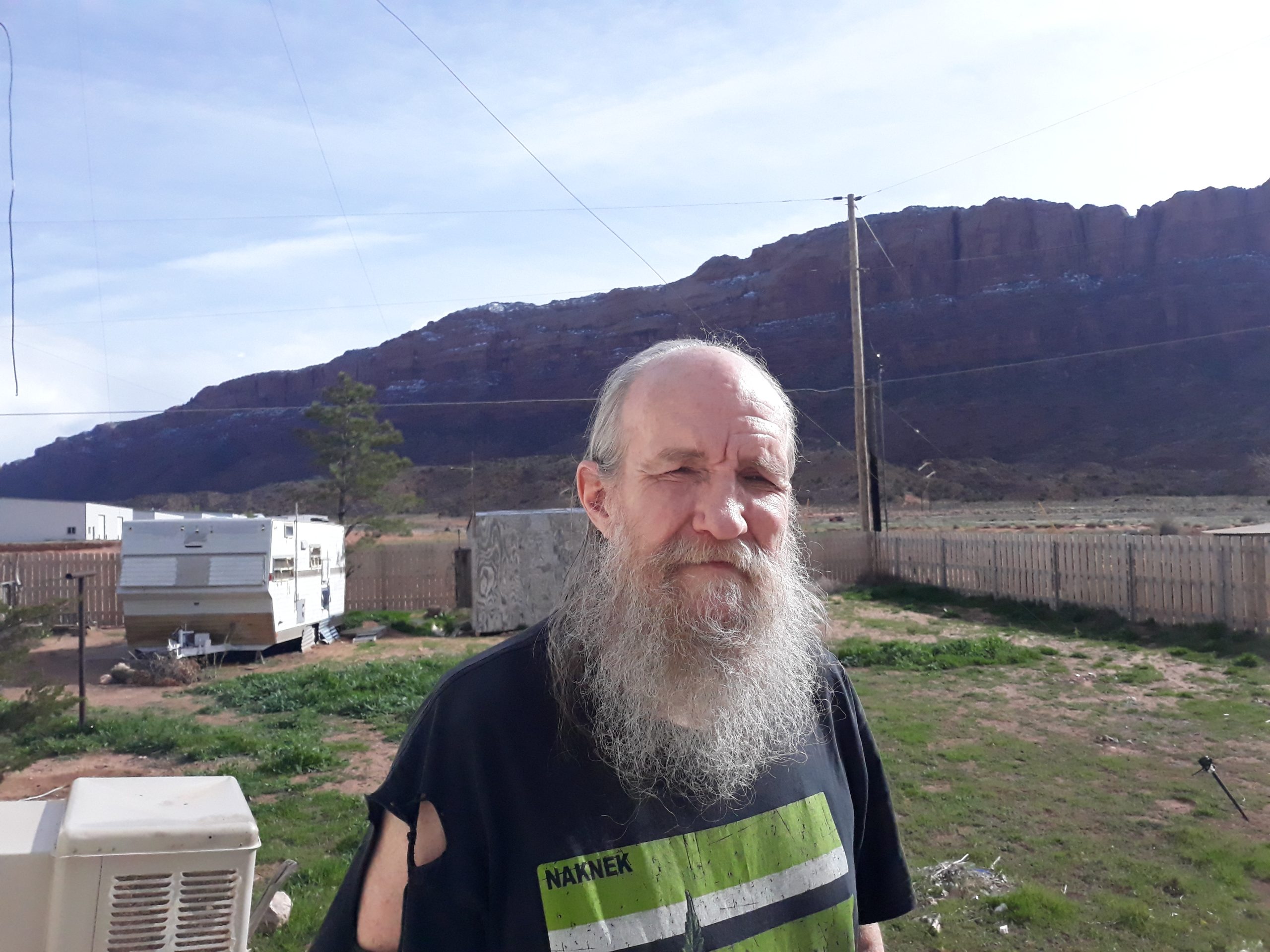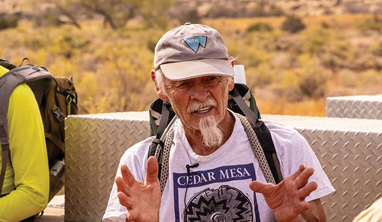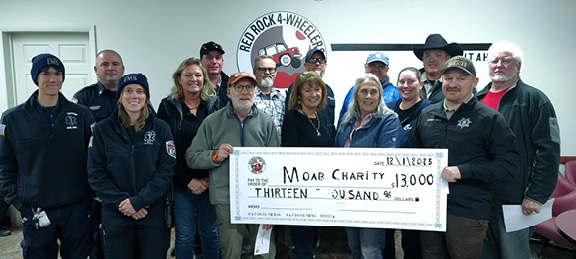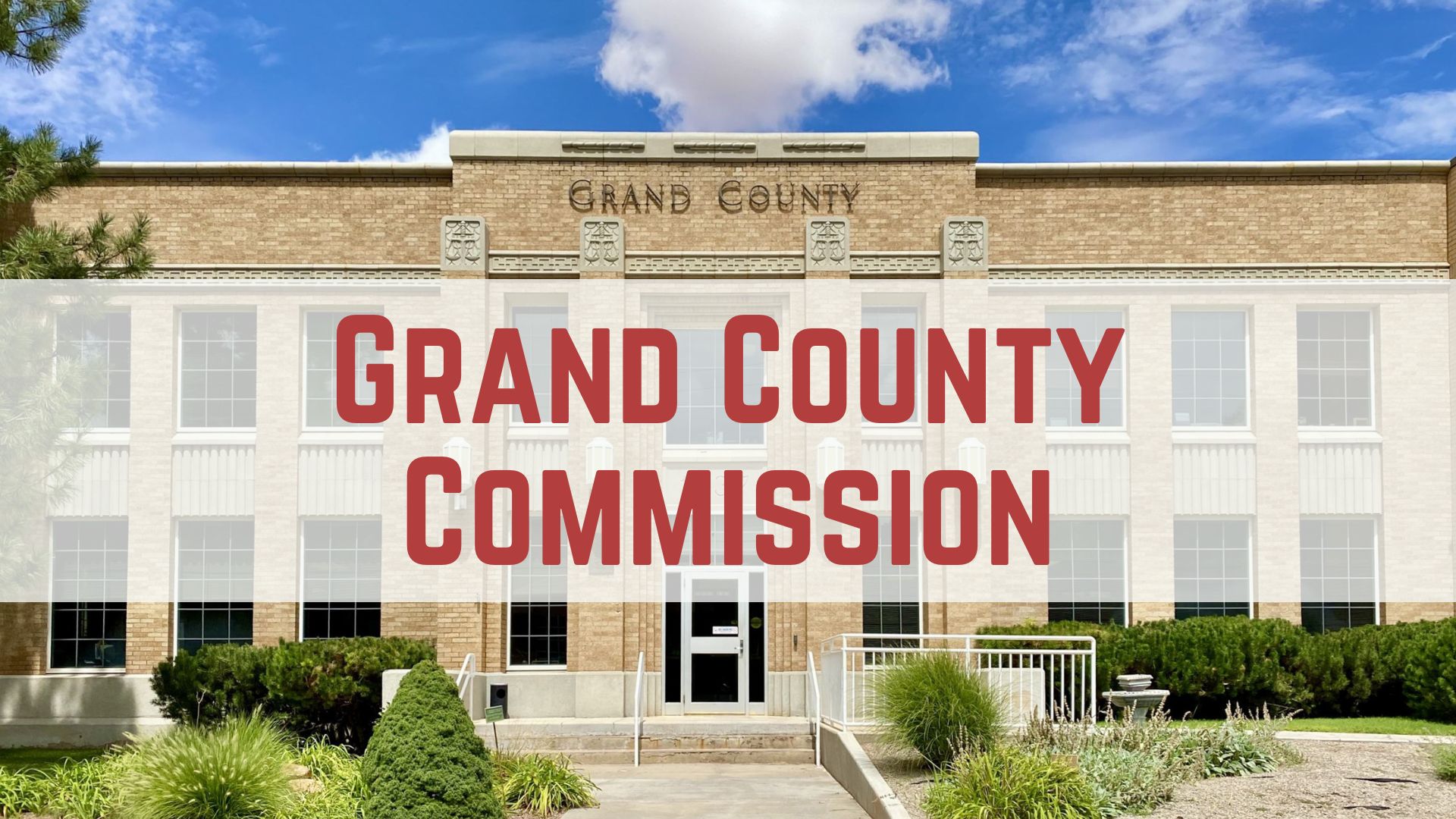Some information may be outdated.
San Juan County astrophotographer Bill Butcher has been taking photographs from his front yard of southeastern Utah’s night skies for nearly 30 years.
“The skies are just absolutely beautiful here when it’s dark,” Butcher said from his front porch. “I mean, you can see the Milky Way so well it’s like when I was a kid.”
Butcher lives about 7 miles south of Moab on Sunny Acres Lane in Spanish Valley. Butcher said on April 11 that he wasn’t aware of the recent public meetings in San Juan County to foster commercial development close to where he lives.
A new plan for a 13-acre Love’s Travel Stop has been announced by the Utah School and Institutional Trust Lands Administration (SITLA). It’s the first travel stop designed for tractor-trailer traffic in the region and is considered to be the largest development plan for the area near Sunny Acres Lane, according to the people who live there.
At a public meeting in April with the San Juan County Planning Commission, residents raised questions over how the county would work to protect dark skies in the Moab area with the increased commercial development.
Butcher did not attend the meeting, but said that he is concerned about the news of the commercial development.
“Unfortunately, if they put a whole bunch of lights up, that’s going to destroy the whole situation here,” he said. “In our backyard, I don’t really like it. It’s probably going to cause a lot of stress and problems with the neighbors.”
He said he supports San Juan County’s adopting an ordinance to protect dark skies similar to recent ordinances passed in Grand County to shield lights and direct nighttime lighting toward the ground, instead of up toward the sky.
“Anytime you have anybody that puts up lights and things that aren’t set up to point at the ground, then the light’s going to be going everywhere,” Butcher.
Not far from where Butcher lives are billboards along U.S. Highway 191. One billboard has nighttime lights that point up toward the billboard and the sky.
When shown a picture of the billboard and its lights and asked if the new ordinance to protect night skies in Grand County would change how the lighting is attached to the billboard, Grand County Community and Economic Development Department Director Zacharia Levine said such billboard lights would be required to come into compliance within five years.
He also said the Utah Department of Transportation (UDOT) “no longer approves billboards in this area because of scenic qualities” and said Grand County doesn’t allow billboards, either.
Grand County Attorney Christina Sloan agreed, and said Levine summarized the new ordinance and law well.
Spanish Valley resident Cindy Picket is one of the people who commented at the Grand County Council meeting on April 2 as the new lighting ordinance was discussed. She said she’s had a home in Spanish Valley for about 11 years.
“Way back when we were first in the area, you could still see the Milky Way crystal clear … and now there’s quite a huge umbrella of light coming up out of the city (of Moab) and the Milky Way just isn’t there like it used to be,” she told the council. “So, it’s really something close to my heart … it’s something I look forward to seeing at night.”
She supports the idea to promote light fixtures that direct the light down to redirect the artificial lighting away from the night sky.
“A lot of people complain about those really tall lights, and that goes for billboards too,” she said, and also offered a bit of advice on lighting: “Look out for light fixtures that say they are dark sky compliant but really ‘shine out’ instead of point the light down toward the ground.”
According to Utah Office of Tourism, which provides the public with information on Utah’s dark sky parks, the highest concentration of “the finest dark skies in the world” are cataloged in Utah.
“Utah is also at the heart of a dense cluster of certified parks called The Great Western Starry Way from New Mexico to Montana, and half are in Utah,” the Utah Office of Tourism’s website says.
In a recent Dark Sky Planning report for guidance and best practices published by the Utah Department of Workforce Services and the Community Development Office for Rural Planning, “Utah is home to some of the darkest skies in the nation and is the national leader in dark sky protection and preservation.”
The report was drafted in consultation with the International Dark-Sky Association (IDA) and says, “Generally, use lighting where it’s needed, when it’s needed, and only as bright as needed.”
“…The bottom line for planners and elected officials is what’s good for dark skies also saves money, by making sure light is used most efficiently — including the most effective ways to improve public safety,” said John Barentine, IDA’s director of conservation.
FEAR OF HUMAN TRAFFICKING PROMPTS PUBLIC MEETING
Dark skies are not the only concern that residents in the valley have with the development of the Love’s Travel Stop. A second issue is human trafficking and other crimes associated with truck stops, although SITLA denied that belief in a press release issued on April 30.
Some local residents have indicated concerns about drug dealing, prostitution and human trafficking and have unfairly stereotyped professional truck drivers, SITLA said in its press release.
Included in the press release was a statement from SITLA Resource Specialist Bryan Torgerson.
“I truly believe it is unfair when people stereotype all truck drivers as drug addicts and human traffickers just to stir up fear to prevent development,” he said.
The Moab Sun News asked Utah Highway Patrol Trooper Ty Roberts in 2018 what the law enforcement agency’s top concerns are for the Moab area. Roberts said at the time that one of the top three biggest issues seen in the Moab area is human trafficking, as Moab is located along a trafficking corridor between Las Vegas, Nevada, and Denver, Colorado. Roberts said human trafficking is already occurring in southeastern Utah.
The Federal Bureau of Investigation (FBI) said human sex trafficking “is the most common form of modern-day slavery” in a 2011 feature published on its website and says “Locations, such as truck stops, strip clubs, massage parlors, and cheap motels, are havens for prostitutes forced into sex trafficking.”
But in SITLA’s press release, San Juan County Sheriff Chief Deputy Alan Freestone is quoted as saying, “I don’t believe that the human trafficking and drug dealing will be nearly as big of a problem as people have it made out to be. Nonetheless, we have special task forces to take on and address such law enforcement issues and we are happy to do our part to keep all crime in San Juan County to an absolute minimum.”
Love’s real estate manager Kym Van Dyke will hold a public question-and-answer meeting on Thursday, May 9, at 6 p.m., to address the public’s concerns about the Love’s Travel Stop.
As of May 1, the meeting was scheduled to take place at the Grand Water and Sewer Service Agency at 3025 Spanish Trail Rd. The Moab Sun News informed SITLA that “If it’s like the last meeting held in this location, some of the residents who show up won’t have any room to get inside the building and they won’t be able to participate” and recommended that the meeting be held at the Old Spanish Trail Arena to accommodate everyone; no change to the meeting’s location had been made as of press time.
SITLA, which says it will receive $1.27 million from Love’s in the deal, said the Love’s Travel Stop will “include design restrictions and requirements based on recent public input.”
Also quoted in SITLA’s press release are former San Juan County Administrator Kelly Pehrson and Grand County Council member Rory Paxman.
“In addition to the economic benefits to the county, Love’s Travel Stops has a solid reputation of creating a clean and friendly environment for each of its stores,” Pehrson is quoted as saying. “Love’s does its very best to blend and assimilate into the local community.”
Paxman acknowledged that the Moab area has “a lot of truck traffic” and said, “It isn’t uncommon to see semi-trucks parked all over the place and on both sides of the roads. I think it would be good to have a place where drivers can go for what they need without having to stop in the congested Moab area.”
San Juan County residents concerned by commercial development
“In our backyard, I don’t really like it. It’s probably going to cause a lot of stress and problems with the neighbors.”
Appreciate the coverage? Help keep local news alive.
Chip in to support the Moab Sun News.





